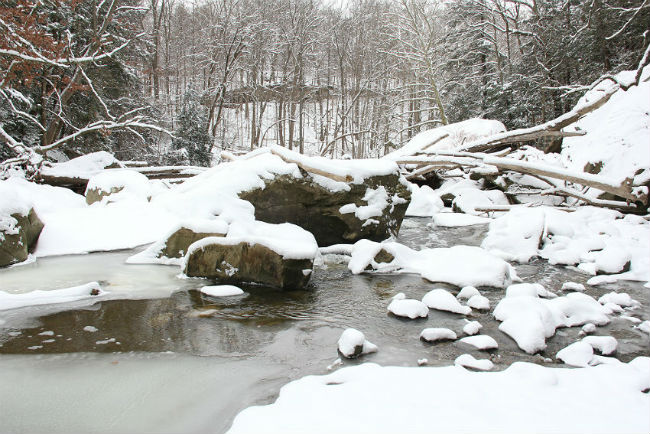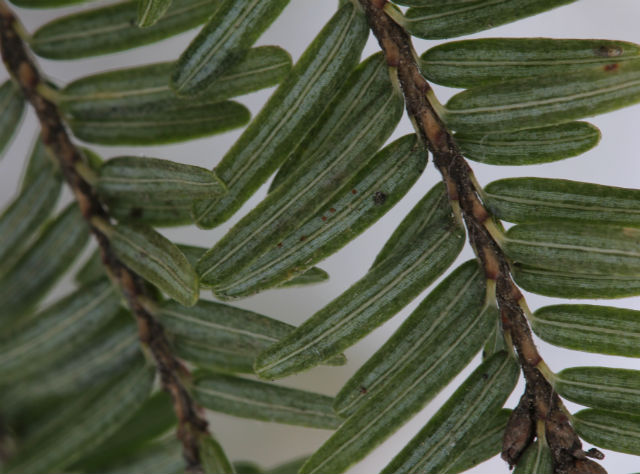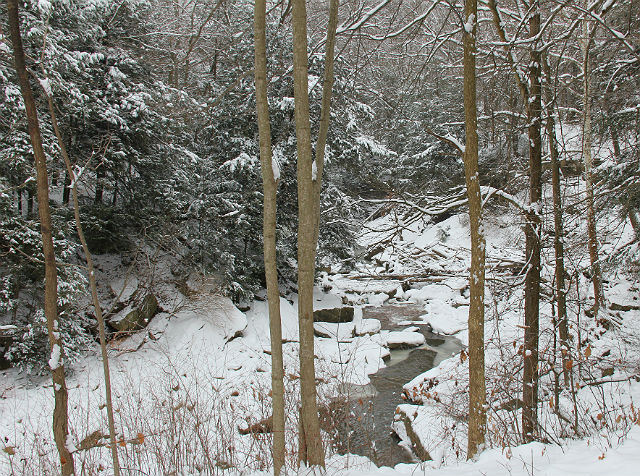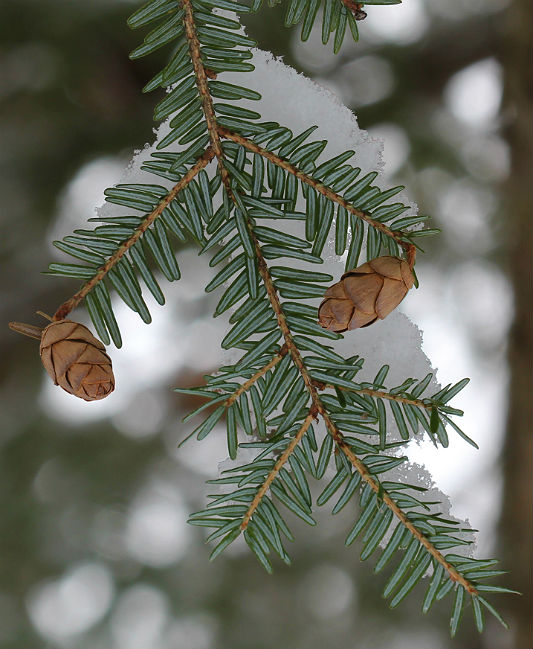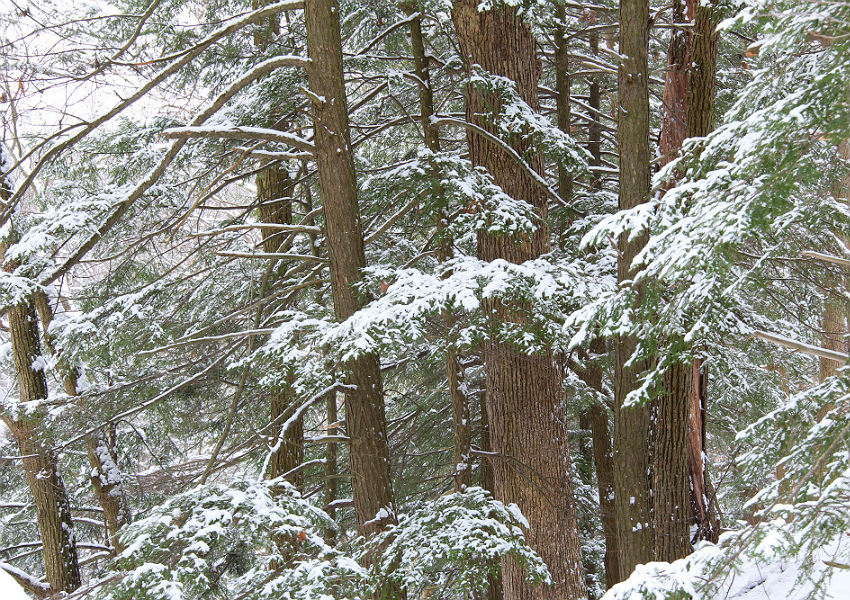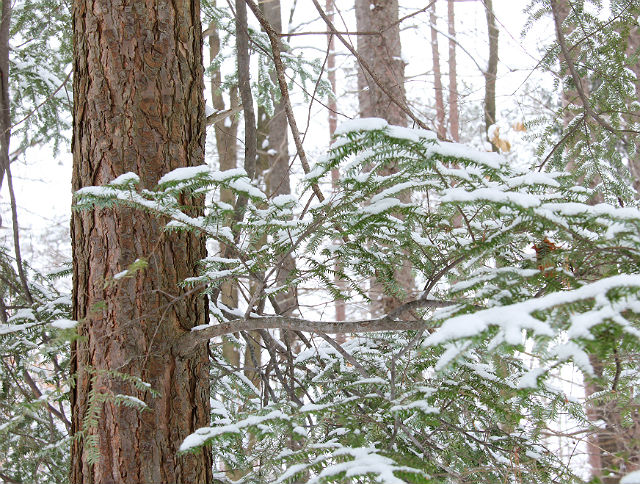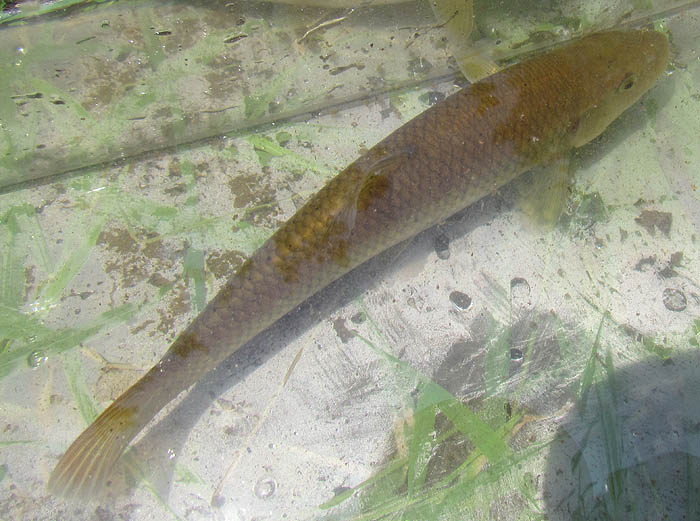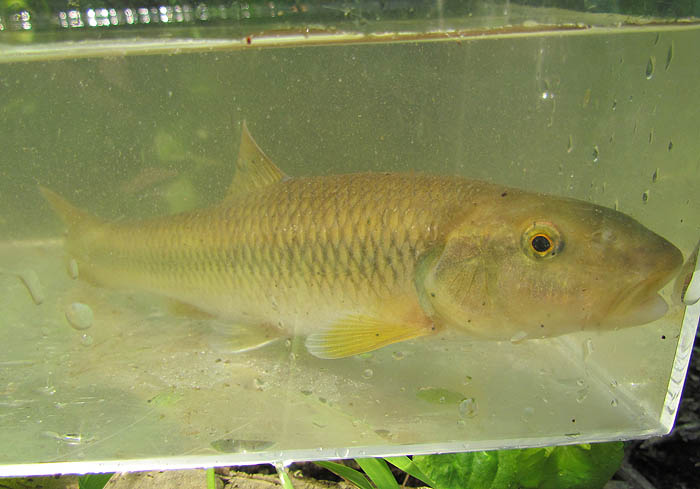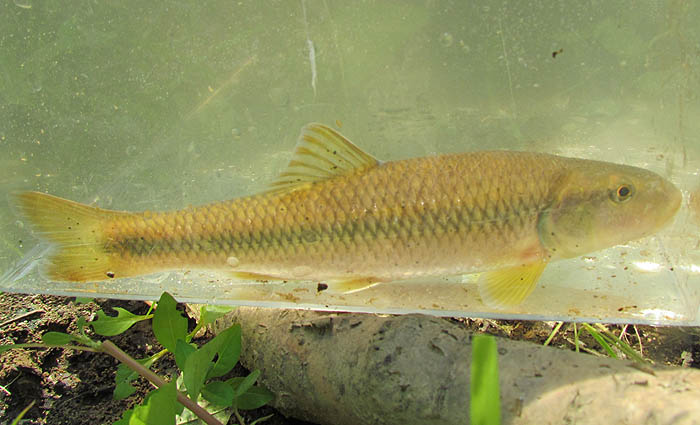Ohio’s only native hemlock can be differentiated from other Buckeye State conifers by its flattened needles, featuring 2 white lines beneath them.
This tree grows best in cool, moist locations such as the north-facing slopes of deep ravines. The photos in this blog post were taken near Chippewa Creek in Brecksville Reservation.
Its cones are very small (from ½ to ¾ of an inch long), and appear pale green in the early autumn and turn a darker brown in late autumn. The cones hang singly from the tips of twigs and have 2 small seeds underneath their rounded scales.
The Eastern Hemlock has a range that covers most of the eastern United States and extends into Canada and to the west. This is a slow-growing, long-lived tree, which unlike many conifers grows well in shade. Eastern Hemlocks can take 250 to 300 years to reach maturity and may live for 800 years or more.
Its size varies tremendously, based upon local growing conditions, but in general Eastern Hemlock slowly reaches 70 feet in height by 35 feet in spread in favorable sites. Specimens can achieve twice that size under optimum conditions.
“Back in the day” its bark was much in demand for its tannic acid, which was used for tanning leather. Lumber production from eastern hemlock reached its peak between 1890 and 1910 but is seldom harvested for solid wood products now. Several birds and mammals feed on its seeds.

